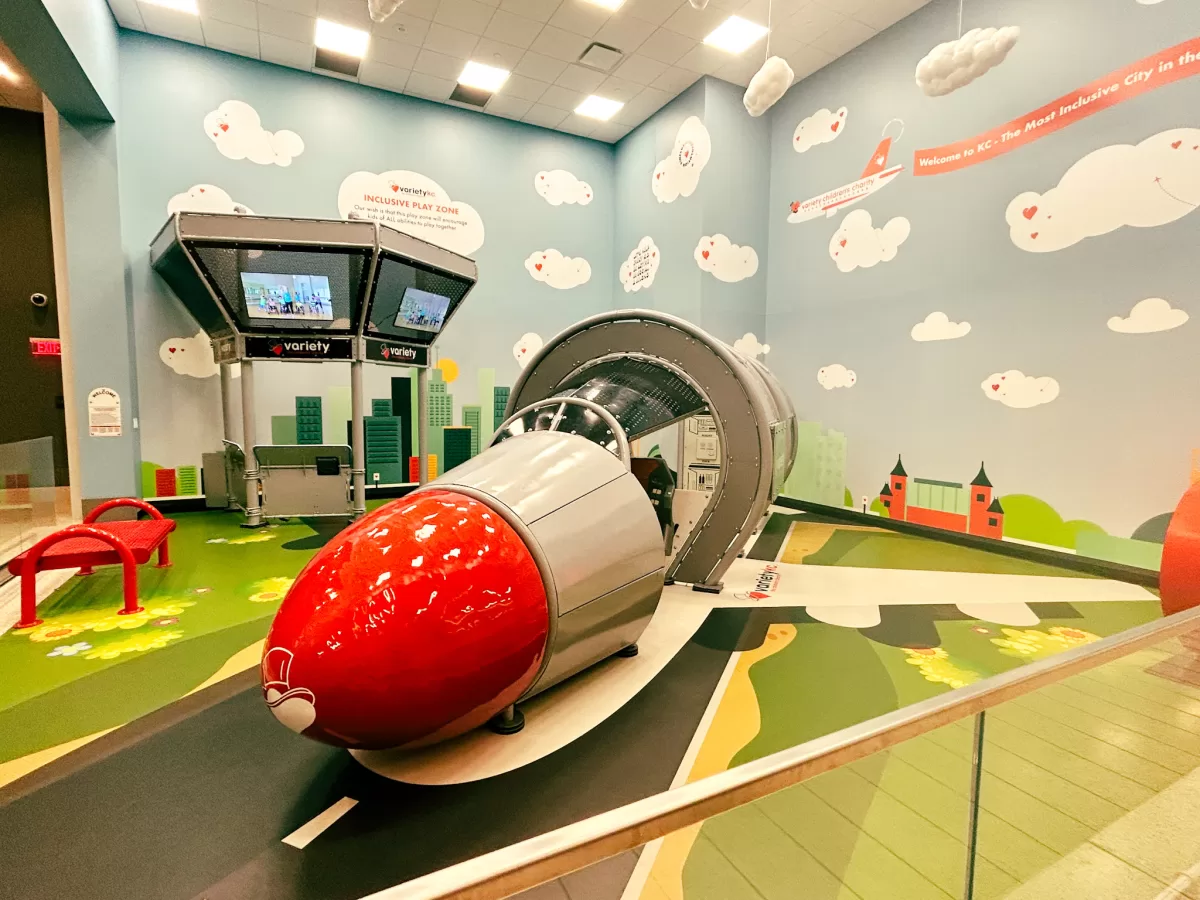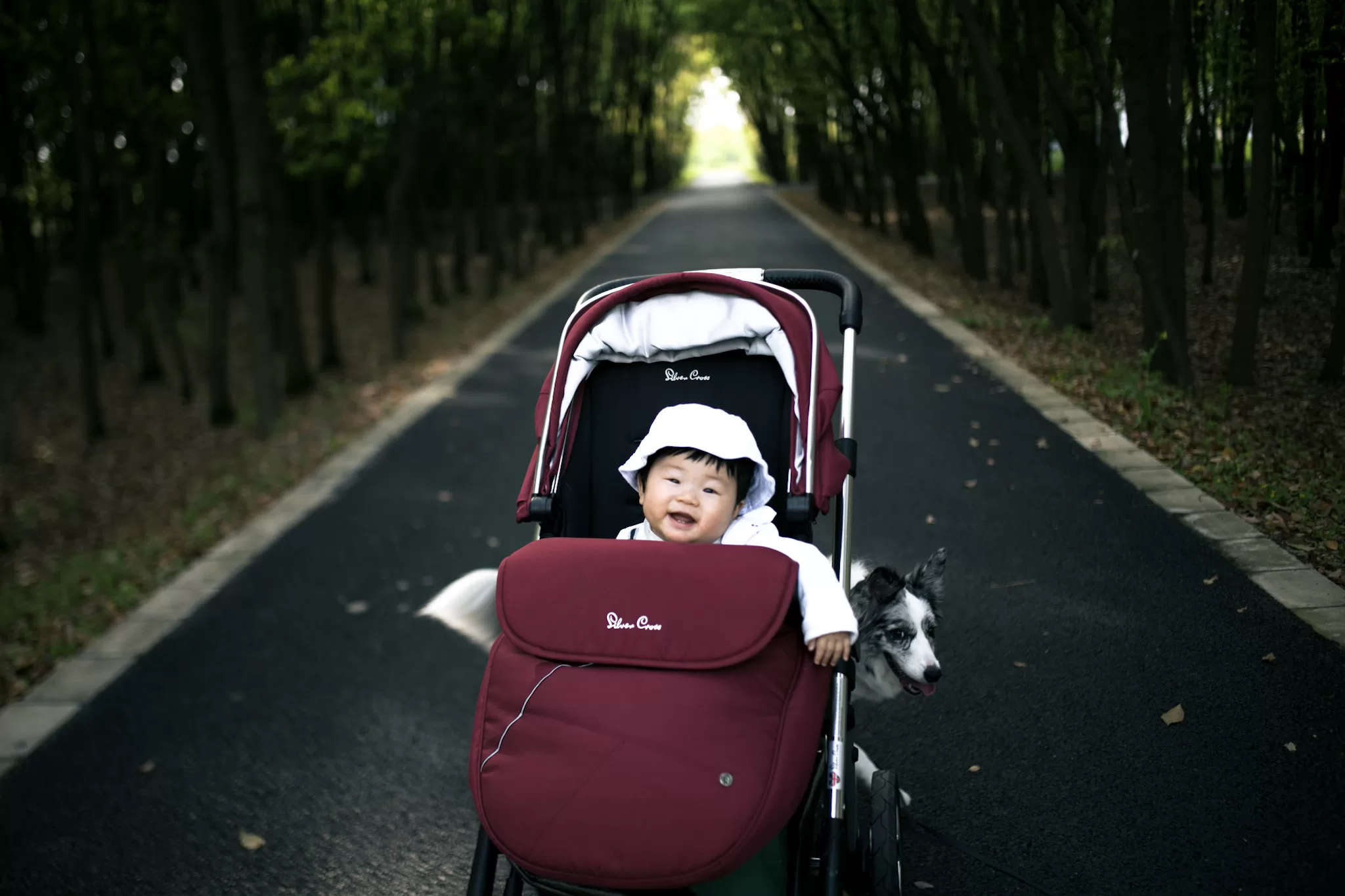101 Expert Tips and Tricks for Traveling with Kids
Ah, Traveling with kids – it’s the adventure every parent anticipates with a mix of excitement and trepidation. The fears and stresses of traveling with children are no secret.
As a first-time mom, I thought that my travel days were over. It was too intimidating to travel with a baby.
What would I pack? How would I keep my child entertained? How would we navigate restaurants? Where would he sleep? What if he cried?
If you are feeling this way as well, read on. In this article, I share my best tips for traveling with kids.
I will show you the must-have travel gear, how to navigate the airport, what to look for when booking your accommodations, and how to plan for family activities.
These are the family travel trips that I use when I take my family all around the United States and Internationally.
I want you to experience the undeniable joy of witnessing the world through their eyes and creating unforgettable memories together.
Hopefully, this list will make kids’ travel less overwhelming so you can start planning your family vacation today.
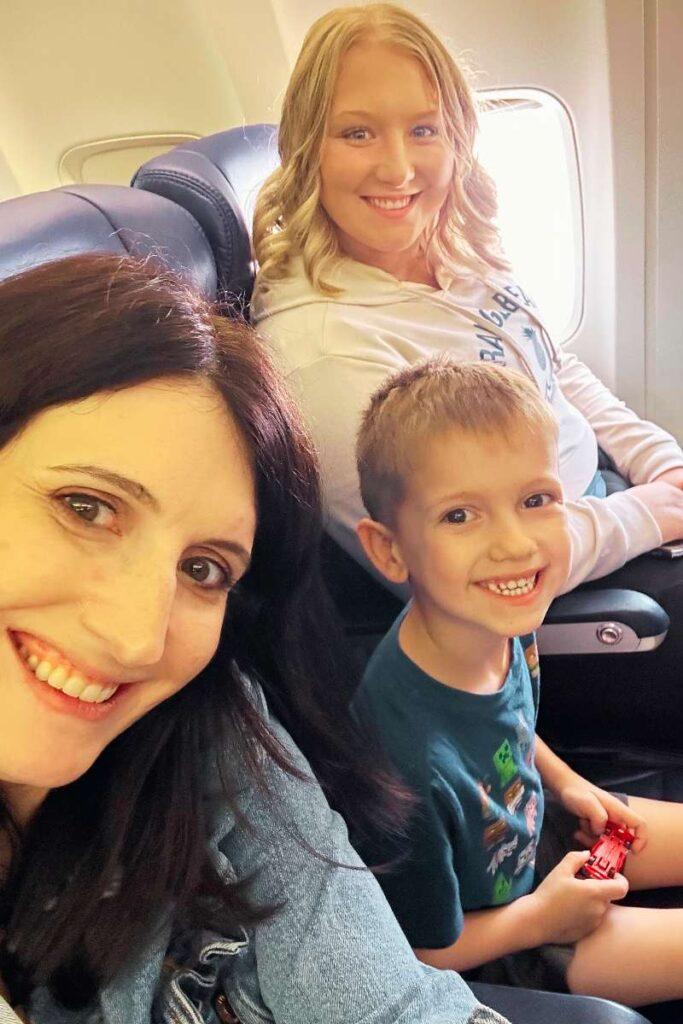
Tips for Flying with Kids
1. Sign your kids up for frequent flyer programs. They will thank you later.
Frequent flyer programs are not just for adults; they can also benefit children.
Many airlines offer loyalty programs for kids that accumulate miles or points with each flight.
Over time, these points can lead to free or discounted flights, upgrades, or other perks. Trust me! They will thank you later.
2. Don’t board with early boarding
While early boarding may seem tempting, it’s often a better idea to wait until the later stages of boarding.
Early boarding means more time spent sitting on the plane, and for kids, this Is more time in a confined space.
Waiting until the later stages allows your children to burn off some energy before getting on the cramped flight.
3. Book flights in the morning: They are typically less crowded.
Morning flights tend to be less crowded than those later in the day, making them an excellent choice for traveling with kids.
Smaller crowds mean more space to move around, quicker boarding and disembarking, and a generally more relaxed atmosphere.
Plus, kids are often more well-rested and cooperative in the mornings, which can make the entire journey smoother.
4. Invest in an inflatable footrest or bed for long flights.
For long-haul flights, consider investing in an inflatable footrest or bed for your child.
These compact and lightweight accessories can transform the cramped airplane seat into a more comfortable and restful space.
We brought one for our recent long-haul flight to Barcelona. Best Purchase EVER.
Your child will be able to stretch out and sleep or relax, which can make a significant difference in their mood and energy upon arrival.
5. Gate check stroller.
If you’re traveling with a stroller, take advantage of the gate check service offered by most airlines.
Gate checking allows you to use your stroller throughout the airport, making it easier to navigate with young children.
These items will be waiting for you at the gate upon arrival, so you won’t have to worry about carrying them through the terminal.
6. Book direct flights whenever possible to minimize layovers and potential disruptions.
Direct flights are a parent’s best friend when traveling with kids.
Minimizing layovers reduces the overall travel time and eliminates the stress of rushing to catch connecting flights.
Additionally, direct flights decrease the chances of lost luggage or missed connections, making the trip more hassle-free.
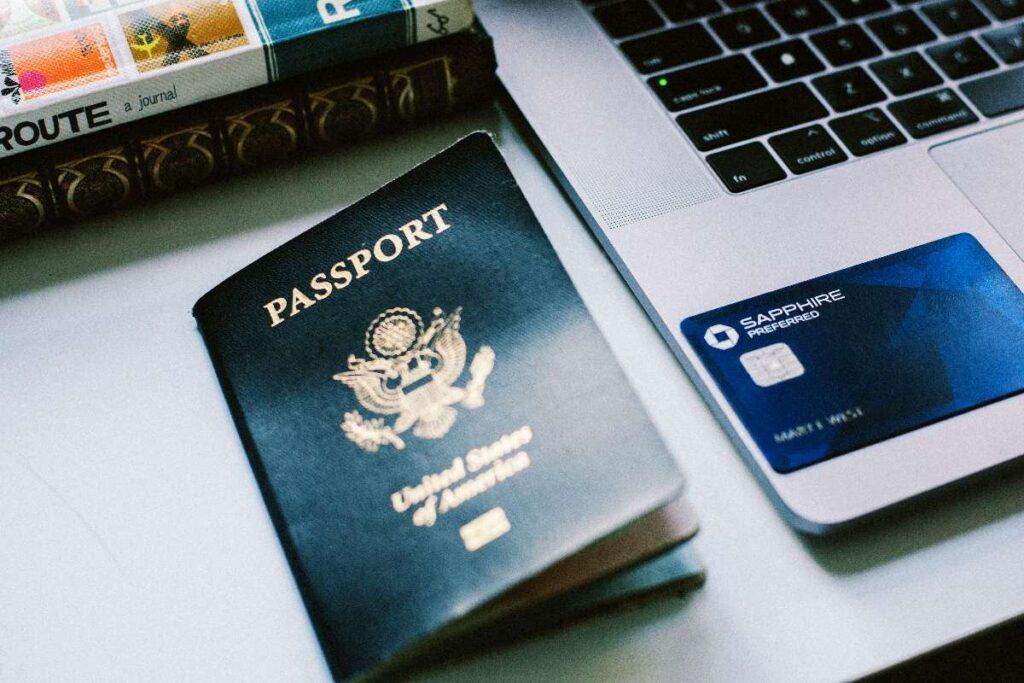
TIA and security travel tips
7. Check out all TSA regulations for how to transport milk, juice, and other liquids.
Before heading to the airport, familiarize yourself with the Transportation Security Administration (TSA) regulations regarding transporting liquids for your child.
Baby formula, breast milk, and juice are allowed in reasonable quantities, even if they exceed the standard limit for other liquids.
8. Let kids know what to expect to ease anxiety. Practice going through security at home.
Security procedures can be intimidating for kids, especially if it’s their first time flying.
To ease their anxiety, talk to them about what to expect during the security screening process. You can even make it a fun game by practicing at home.
to be airport security officers and show them how to remove their shoes, place belongings in bins, and walk through a pretend security scanner.
9. Let them know they are “super spies” while going through the security scanner.
Turn the security scanning process into an exciting adventure by telling your kids that they are “super spies” or “secret agents” during the security scan.
Explain that the scanner is like a superhero gadget that can detect invisible things to keep everyone safe.
10: Skip shoes with laces for easy travel through airport security.
While younger kids don’t always have to remove their shoes for security, you want to make the process easy for everyone.
Opt for slip-on shoes or Velcro-fastened footwear for BOTH you and your kids.
Shoes with laces can be time-consuming to remove and put back on during security checks. Slip-on shoes not only save time but also make it more convenient for your child to move comfortably through the airport.
11. Use TSA Precheck: If your child is under 13 years of age, they can go through TSA Precheck with you.
If you’re a frequent traveler and haven’t signed up for TSA Precheck yet, now is the time. TSA Precheck allows expedited screening, which means shorter lines and avoiding the removal of shoes, belts, and light jackets.
The best part is that your child under age 13, can go through the Precheck lane with you.
What to do at the Airport with kids
12. Organize a mini-treasure hunt with small surprises hidden in their carry-on bags.
Before you embark on your journey, prepare a mini-treasure hunt for your kids.
Hide small surprises or treats in their carry-on bags or backpacks.
Create a simple list of clues for them to follow, leading to the hidden surprises. This activity will not only keep them engaged but also add an element of excitement to the airport experience.
13. Take advantage of airport bookstores and let them pick out a new book to read.
Visiting airport bookstores can be a wonderful way to introduce your kids to new stories and keep them occupied during the flight.
Let them explore the bookstore and choose a book that captures their interest.
14. Research if the airports you will be flying from have a kids’ play area.
Many airports now offer dedicated kids’ play areas, which are excellent spaces for children to burn off some energy before or between flights.
These play areas usually have slides, climbing structures, and interactive games to keep your kids entertained.
Bonus: They might take a nap on the airplane if they can burn off some energy.
15. Utilize airport lounges
If you have a long layover or expect delays, consider purchasing a day pass to an airport lounge or checking if your travel credit card offers lounge access.
I have a Capital One Venture X travel credit card which allows me and my family to access airport lounges all over the world.
Airport lounges are comfortable, quiet spaces where you and your kids can relax and enjoy complimentary snacks, drinks, and sometimes even entertainment.
This is a fantastic way to keep everyone refreshed and content during extended waits.
16. Prepare fun travel games and activities for the flight.
Pack a selection of travel-friendly games and activities that your kids can enjoy during the flight.
Coloring books, sticker books, travel-sized board games, and puzzles are excellent options to keep them engaged while on the plane.
Additionally, consider downloading kid-friendly apps or shows on tablets or smartphones for on-the-go entertainment.
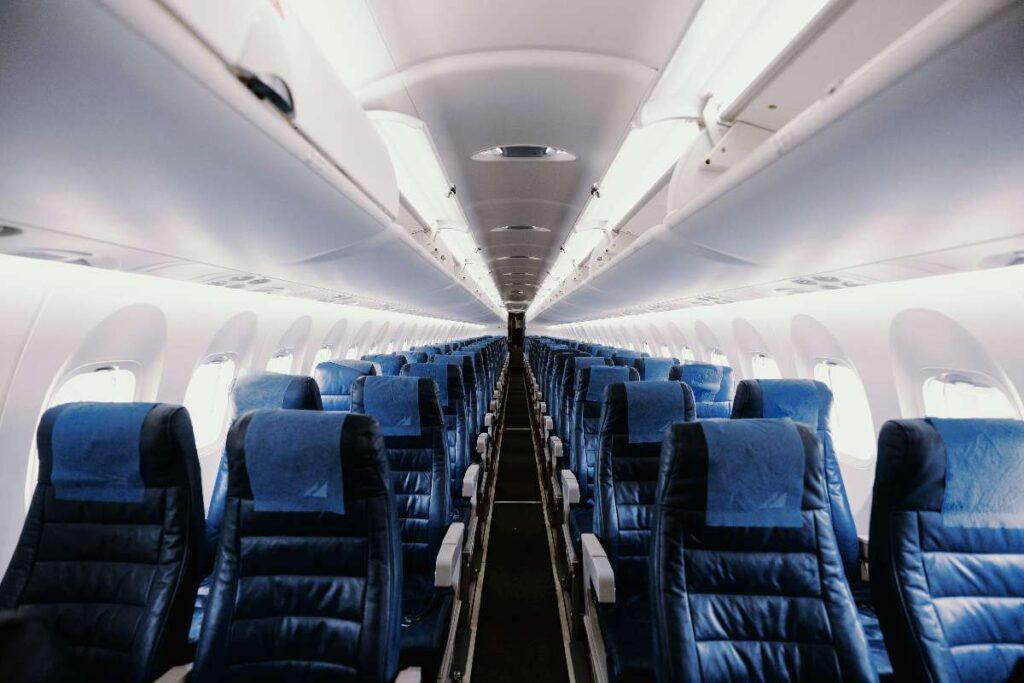
Airplane Seat Selection for Children
17. Opt for seats near the bulkhead, which usually offer more legroom and a bassinet for infants.
Research your seat configuration before selecting seats. When booking your flight, consider selecting seats near the bulkhead, which is the partition wall that separates different sections of the aircraft.
These seats often provide more legroom, allowing your kids to stretch their legs and move around a bit more comfortably during the flight.
Additionally, bulkhead seats are sometimes equipped with bassinets, which are handy for infants to sleep in, especially during long flights.
Note: You will not be able to put your carry-on bags under the seat in the bulkhead section so if you need direct access to your bag, this may not be the best option for your family.
18. If traveling with toddlers, consider choosing window seats to keep them entertained with the view.
For toddlers and curious young minds, window seats can be a source of endless fascination during the flight.
The view from the window provides a captivating experience as they watch the world from above.
Pointing out clouds, landscapes, and other planes can be an exciting and educational activity that keeps them engaged throughout the journey.
Bonus Tip: Pack window clings to have your child stick on the window. This is cheap and easy entertainment and can easily be packed in a carry-on.
19. Research the aircraft layout and seat configuration before booking.
Different airlines have varying seat configurations on their aircraft, so it’s essential to research the layout before making your reservations.
Look for reviews and seat maps online to find the best seating options for families.
Aim for seats that offer ample legroom, easy access to restrooms, and are close to the galley for quick assistance from the flight attendants.
20. Bring along travel pillows and blankets for added comfort.
Regardless of your seat choice, bringing travel pillows and blankets can enhance your kids’ comfort during the flight.
These familiar items can provide a sense of security and coziness, making it easier for your little ones to relax and sleep during the journey.

Minimizing Ear Discomfort on take-off and Landing for babies and small children
21. Offer a pacifier, bottle, or sippy cup during take-off and landing to help with ear pressure.
For infants and young children who are not yet able to chew gum or swallow intentionally, sucking on a pacifier, bottle, or sippy cup can be incredibly helpful in equalizing ear pressure.
The sucking motion encourages the opening of the Eustachian tube, which connects the middle ear to the back of the throat, allowing air to flow in and out and equalize the pressure.
This simple technique can significantly reduce ear discomfort during ascent and descent.
22. Chewing gum or swallowing can also help older kids equalize ear pressure.
For older children who can chew gum or swallow independently, these actions can be effective in equalizing ear pressure during take-off and landing.
Chewing gum or swallowing prompts the same process as sucking on a pacifier or bottle, and prevents ears from becoming full and painful.
Airplane Food for kids
23. Pack a variety of kid-friendly snacks to keep hunger at bay during the flight.
When it comes to air travel, packing an assortment of kid-friendly snacks is a must.
Long flights or delays can lead to hungry and restless children, and having their favorite snacks on hand can be a lifesaver.
24. Check with the airline for special meal options suitable for your child’s dietary needs.
If your child has specific dietary requirements or allergies, it’s essential to inquire with the airline about special meal options.
Many airlines offer special “kid’s meals” with kid-friendly options.
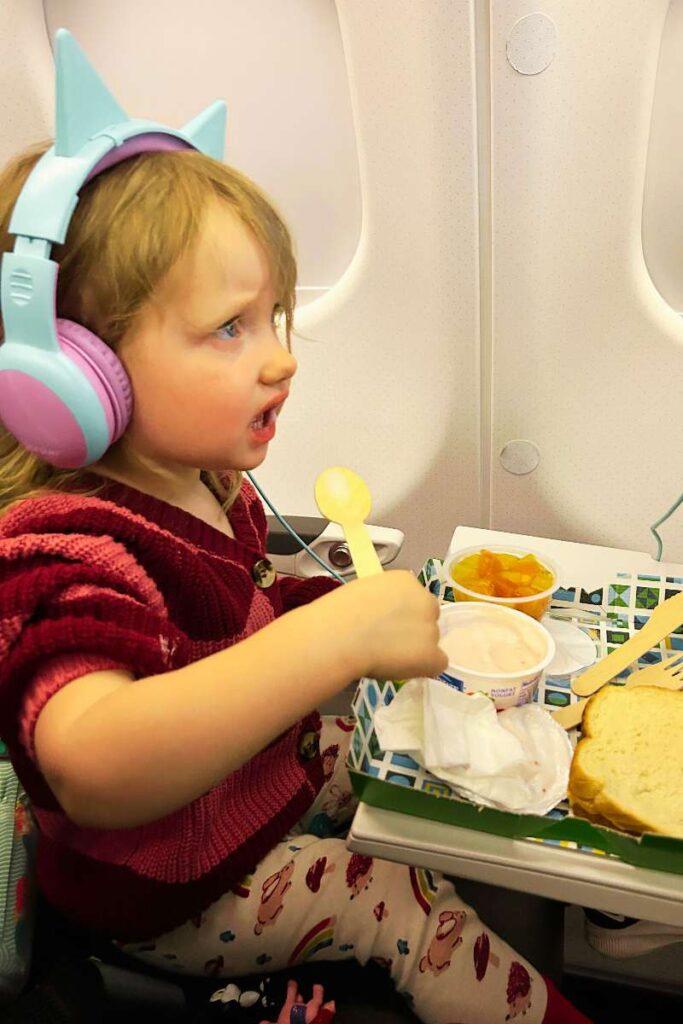
Managing Jet Lag when traveling with kids
25 Adjust your child’s sleep schedule gradually before the trip to minimize jet lag.
One of the most effective ways to minimize jet lag is to gradually adjust your child’s sleep schedule in the days leading up to the trip.
If you’re traveling eastward, try to move bedtime and wake-up time earlier by 15-30 minutes each day for several days before departure.
Conversely, if you’re traveling westward, gradually shift bedtime and wake-up time later.
26. Spend time outdoors during the day to help them adjust to the new time zone.
Exposure to natural light is a powerful tool in helping the body adjust to a new time zone.
Spend time outdoors during the day, especially during the hours when sunlight is most intense.
Sunlight exposure helps regulate the body’s internal clock and signals to the brain that it’s time to be awake.
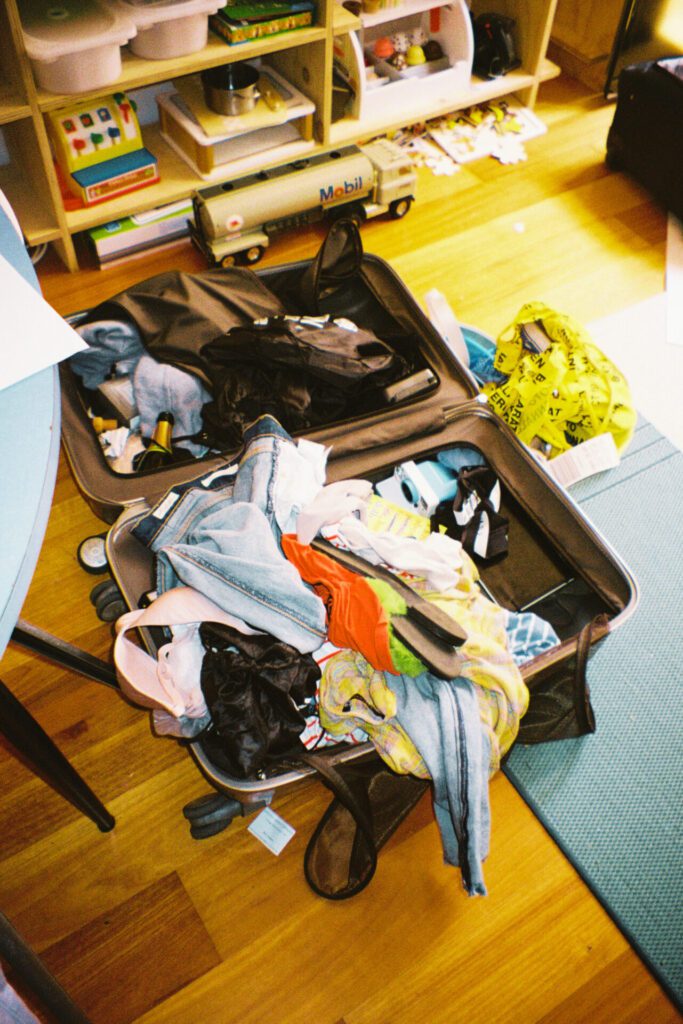
Kids Packing Tips
27. Make a checklist of essential items and double-check before leaving to avoid any last-minute panic.
Creating a packing checklist is a lifesaver when traveling with a family.
Before you start packing, make a list of essential items for each family member, including clothing, toiletries, medications, and any special items or equipment they may need.
Double-check the list before leaving to ensure nothing is forgotten, preventing any last-minute panic.
28. Roll clothes to save space and reduce wrinkles.
Rolling clothes instead of folding them is a great space-saving technique, especially when packing for multiple family members.
Rolling not only helps maximize luggage space but also reduces wrinkles in clothing, so your family looks presentable upon arrival.
29. Use packing cubes. Have a different color cube for every family member to stay organized.
Packing cubes are a game-changer when it comes to staying organized while traveling.
Assigning a different color cube to each family member makes it easy to identify their belongings and keep everything separate and orderly.
30. Consider packing less and doing a little laundry for trips over 7 days.
For longer trips, it may be more practical to pack less and plan for doing laundry along the way.
This approach reduces the weight of your luggage and ensures you have fresh clothes to wear throughout your journey.
Few bags means more arms to hold your child’s hands or to push a stroller.
31. Buy Diapers and wipes at the final destination
Diapers and wipes can take up a considerable amount of space in your luggage, especially for longer trips.
Instead of packing a supply for the entire journey, pack enough diapers and wipes for the trip to your destination and purchase the rest when you arrive.
32. Pack Rain Gear, including raincoats, umbrellas, ponchos, and waterproof shoes.
When traveling to destinations with unpredictable weather, packing rain gear is a smart move.
Raincoats, umbrellas, ponchos, and waterproof shoes will ensure your family stays dry and comfortable even during unexpected showers.
Do not forget this travel gear.
33. Bring noise-canceling headphones to block out airplane noise and help kids sleep.
Noise-canceling headphones are a game-changer for air travel, especially for families with kids.
They block out the constant hum of the airplane engines and reduce overall noise, making it easier for children to sleep, focus, or relax during the flight.
34. Don’t forget a portable charger to keep your devices powered during the trip.
In today’s digital age, devices like smartphones and tablets are essential travel companions, whether for entertainment, navigation, or communication.
A portable charger ensures that your child’s devices stay powered throughout the trip, keeping boredom at bay for your kids.
35. Consider a travel bed for your toddler or baby.
A portable travel bed is a must-have accessory for families with young children.
Whether you’re staying in a hotel, visiting friends or family, or camping, a travel bed provides a safe and comfortable sleeping space for your toddler or baby.
36. Get a portable sound machine.
A portable sound machine can be a lifesaver, especially if you have light sleepers in the family.
It creates a familiar and soothing sleep environment, drowning out unfamiliar noises and promoting better sleep for everyone.
37. Carry refillable water bottles and encourage the whole family to stay hydrated throughout the trip.
Staying hydrated during travel is crucial, especially when flying or spending time outdoors in warm climates.
Refillable water bottles not only help reduce waste but also ensure that your family has access to water wherever you go.
38. Invest in a good travel stroller.
A good travel stroller can be a game-changer, providing comfort and convenience during sightseeing and exploring.
Look for lightweight, compact, and easily foldable strollers that are suitable for different terrains and travel situations.
39. Get them their own travel backpack.
Empower your kids and encourage their independence by getting them their own travel backpacks.
Let them pack their favorite toys, books, and activities, making them active participants in the travel experience.
40. Wear your baby or toddler. Invest in a Baby carrier.
Baby carriers are a must-have for parents traveling with infants.
They provide a hands-free way to carry your baby while navigating busy airports or exploring tourist attractions, allowing you to move freely without the need for a stroller.
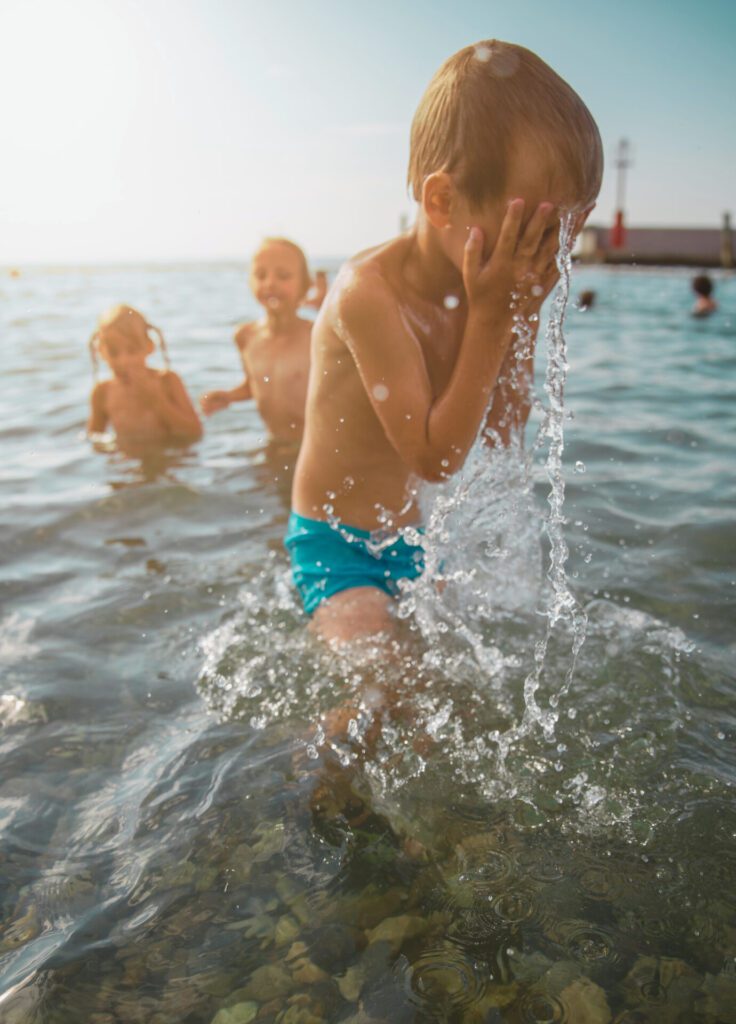
Safety Travel Tips for Kids
41. Prepare a basic first-aid kit with adhesive bandages, antiseptic wipes, pain relievers, and any necessary medications.
A well-stocked first-aid kit is a must-have travel essential for any family.
Include basic items like adhesive bandages, antiseptic wipes, pain relievers suitable for children’s ages, and any prescription medications your family may require.
42. Invest in comprehensive travel insurance
Travel insurance provides peace of mind and financial protection in case of unforeseen events during your trip.
Look for a policy that offers comprehensive coverage, including medical emergencies, trip cancellations, and lost or delayed luggage.
43. Write your contact information on a bracelet or sticker for younger kids in case they get separated from you.
When traveling with younger children, it’s essential to have a plan in case they get separated from you in crowded places.
Write your contact information on a bracelet or sticker and place it on their clothing or belongings.
Teach them to show this information to a trustworthy adult if they need assistance.
44. Supervise kids at all times while swimming and ensure they wear appropriate flotation devices.
If your travel plans include swimming activities, always supervise your children closely while they are in the water.
Even if they are confident swimmers, accidents can happen.
Additionally, make sure they wear appropriate flotation devices, such as life jackets, especially in open water or unfamiliar swimming areas.
45. Teach them about water safety and the meaning of beach flags.
Before heading to the beach or pool, teach your children about water safety.
Explain the dangers of strong currents and the importance of staying close to shore.
Also, familiarize them with the meaning of beach flags, if applicable, so they can recognize the safety conditions at a glance.
Hygiene Tips
46. Pack hand sanitizers and disinfectant wipes to clean hands and surfaces on the go.
Hand sanitizers and disinfectant wipes are invaluable, especially in our post-covid world.
Keep a small bottle of hand sanitizer in your bag or pocket for quick and convenient hand cleaning.
Disinfectant wipes are also handy for wiping down surfaces such as tray tables, armrests, and public transportation seats to reduce exposure to germs. The last thing you want is your kid getting sick on vacation.
47. Carry an extra set of clothes for unexpected spills or accidents.
When traveling with kids, spills, and accidents are bound to happen. Having an extra set of clothes for each family member on hand can save the day and prevent discomfort during your journey.
Don’t forget to pack an extra outfit for yourself in case you get spilled on.

Travel Budgeting Lessons for Children
48. Involve kids in managing vacation expenses by setting a budget and letting them make small purchasing decisions.
Teaching kids about budgeting and involving them in financial decisions is a valuable life lesson.
Before your trip, discuss the vacation budget with your children, explaining what expenses you’ll have and how much you plan to spend.
Allow them to make small purchasing decisions within the budget, such as choosing a treat or souvenir.
49: If you have good credit, sign up for a travel credit card to start banking travel points
Travel credit cards with rewards programs can be a great way to save on travel expenses.
Look for cards that offer travel points or miles on purchases you’re already making, such as airfare, hotels, and activities.
These points can be accumulated and redeemed to help fund your next family vacation.
50: Use the Dollar section at the Dollar Tree for toys.
The Dollar section at discount stores like Dollar Tree can be a treasure trove for budget-friendly travel toys and activities for kids.
Before your trip, visit these stores to find small, inexpensive toys that can keep your kids entertained during travel or downtime.
Bonus: You won’t care if these toys get broken or lost on the trip.
51: Be selective on souvenirs
Souvenir shopping can be fun but can also lead to excess luggage and unnecessary expenses. Encourage your kids to be selective about their souvenirs and focus on one meaningful item or stick to collecting a specific type of souvenir across all your trips such as magnets or postcards.
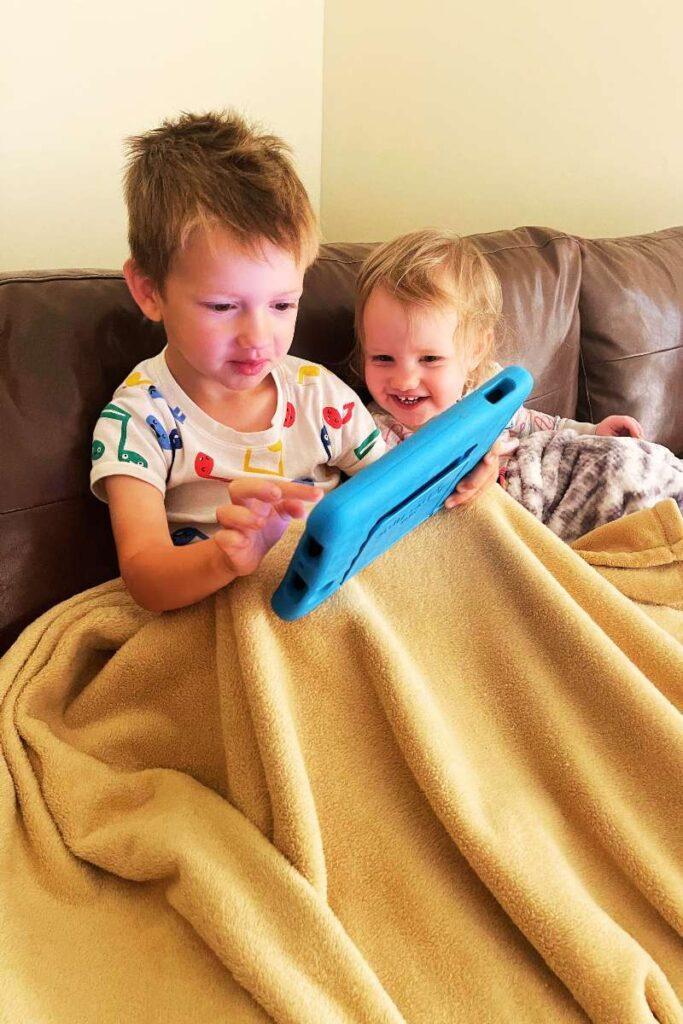
Vacation Entertainment Ideas
52. Load tablets with age-appropriate movies, games, and educational apps.
Travel days are not the time to limit screen time!
Break out the Ipads. Load them with age-appropriate movies, interactive games, and educational apps to keep your children engaged and entertained during long flights or car rides.
53. Bring coloring books, stickers, and small toys to keep them engaged.
Low-tech entertainment options like coloring books, stickers, and small toys can provide hours of fun and creativity for your kids during travel.
54. Carry a small art kit with colored pencils, paper, and stickers for creative fun.
Encourage your children’s creativity during travel by packing a small art kit with colored pencils, paper, and stickers. This allows them to express themselves and create their own masterpieces.
55. Set aside dedicated screen-free time for the whole family to connect and engage in activities together.
While screens can be beneficial for entertainment, it’s also essential to have screen-free bonding time as a family.
Set aside specific periods during the trip for activities that promote togetherness and connection.
56. Prepare surprise treats or small gifts for the kids during the trip to add an extra touch of excitement.
Surprises and small treats can add an extra layer of excitement and anticipation to your family’s travel experience.
Pack some surprise snacks, small toys, or souvenirs to delight your children during the journey.
Travel Tips for Bathroom Breaks
57. Always schedule restroom breaks before boarding and during layovers
When traveling with potty-training toddlers, timing is essential.
Before boarding your flight or during layovers, make sure to schedule regular restroom breaks for your child.
This helps avoid any emergencies during the flight and ensures your toddler stays comfortable throughout the journey.
58. Carry a small potty or a foldable toilet seat for potty-training toddlers.
When traveling, it’s not always convenient to find a suitable restroom, especially for potty-training toddlers.
Consider bringing a small portable potty or a foldable toilet seat with you to provide a familiar and comfortable option for your child.
59: Use Pullups for recently potty-trained kids
If your child is recently potty trained or still mastering bathroom independence, consider using pull-up diapers during travel.
Pull-ups offer a sense of security and prevent accidents, especially during long flights or car rides.

Research Kid-Friendly Accommodations
60. Look for accommodations that offer family suites or connecting rooms for extra space and convenience.
Family suites or connecting rooms provide ample space for everyone to relax and unwind. Having separate sleeping areas allows parents to have some privacy and downtime, while still keeping an eye on the kids.
61: Consider connecting rooms:
As your kids grow older, their need for personal space and privacy also increases. Booking connecting rooms allows everyone to have their own space while still being close to one another.
62. Room Separation
If family suites or connecting rooms are not available, you can still create a sense of separation and privacy within the room. Use a portable room divider or blackout curtains to create a sleep space for napping toddlers or younger children.
63. Book a hotel with a kitchenette
Having a kitchenette in your hotel room provides added convenience and flexibility during family travel. It allows you to prepare simple meals, snacks, and drinks, which can be especially beneficial for picky eaters or dietary restrictions.
64. Book a hotel with a pool
A hotel with a pool can be a fantastic amenity for family travel, providing a fun activity for kids and a relaxing retreat for parents.
65. Travel somewhere with a kids club
If you’re looking for some adult time during your trip, consider staying at a family-friendly resort or going on a cruise that offers kid’s clubs or supervised activities.
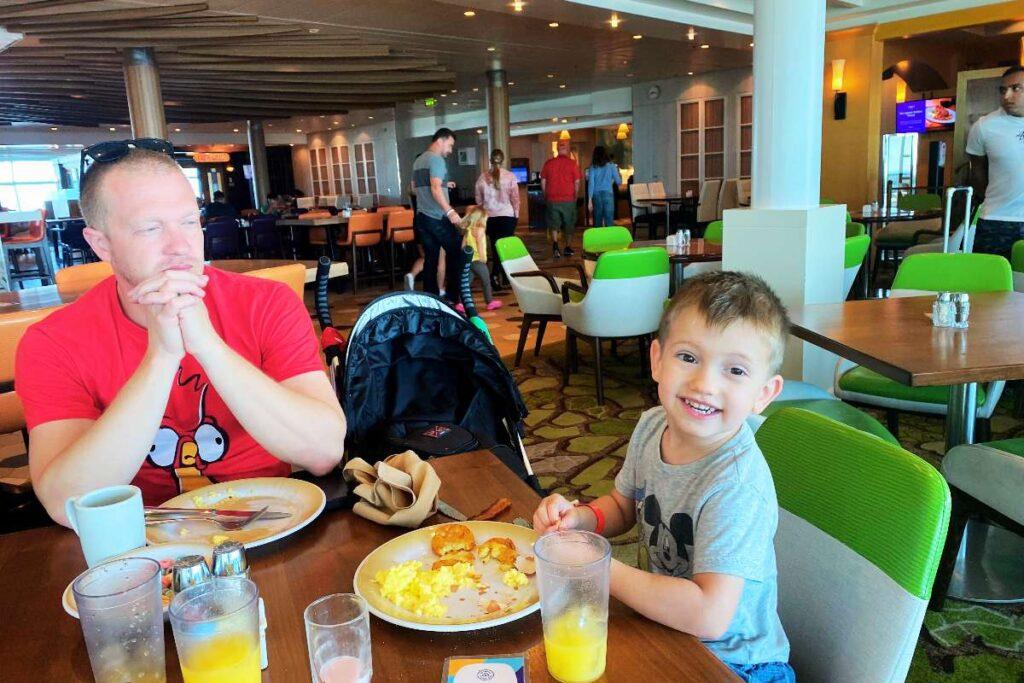
Family Vacation Meal Tips
66. Plan meals in advance and research family-friendly restaurants at your destination.
Before you embark on your journey, take some time to research family-friendly restaurants at your destination. Look for places that offer a welcoming atmosphere for children, as well as menus with a variety of options to suit everyone’s tastes.
67. Encourage kids to try local dishes to make the culinary experience memorable.
Traveling offers a unique opportunity to expose your children to new cultures and cuisines. Encourage them to try local dishes to broaden their culinary horizons and make the dining experience more exciting.
68. Opt for restaurants with kid’s menus or buffets, offering a wide range of choices.
Restaurants with dedicated kid’s menus or buffet options can be a lifesaver during family travel. These options typically offer a variety of child-friendly choices that cater to different preferences. They might not have the most creative or Michelin-star menus, but sometimes you just want something your kid will eat!
69. Bring small toys or coloring books to keep the kids occupied while waiting for food.
This will be a controversial take but I am all about ensuring mealtime is enjoyable for everyone. Waiting for food at a restaurant can be challenging for young children, especially when they’re hungry. Bringing small toys or coloring books can help keep them entertained and patient during the wait.
70. Turn mealtime into a game by creating airplane-themed food presentations.
Make mealtime fun and engaging by presenting food in creative ways, such as turning sandwiches into “airplanes” or arranging fruits into colorful patterns.
71. Involve the kids in choosing their meals from the menu.
Letting your kids participate in the meal selection process empowers them and makes dining out a more interactive experience.
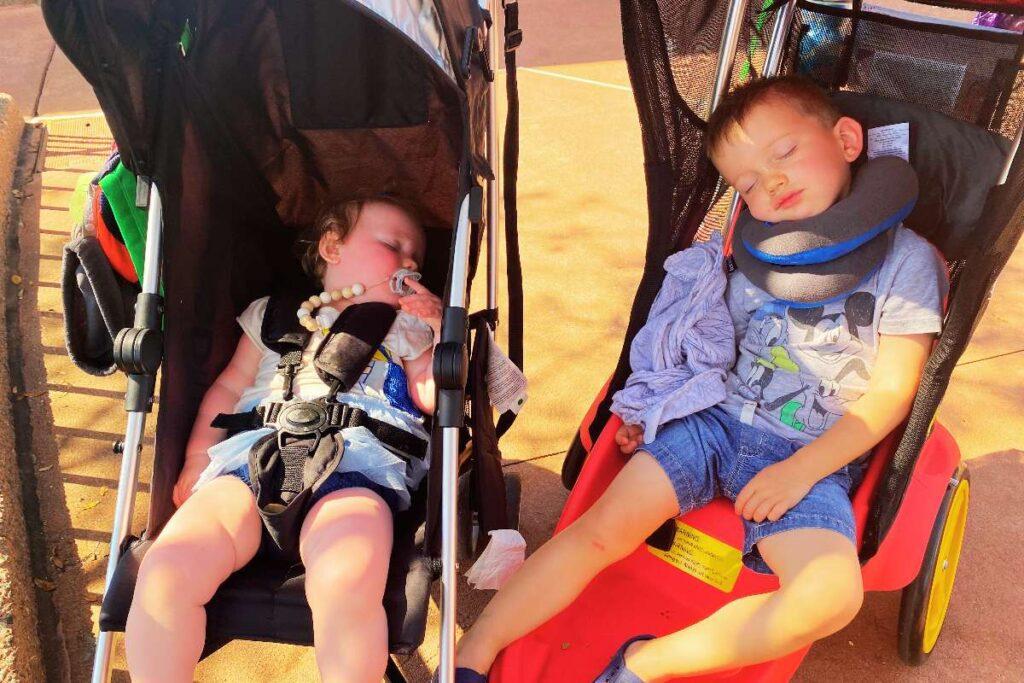
Toddler Naptime Strategies
72. Bring their favorite blankets and stuffed animals for comfort during naps
Familiarity is key when it comes to helping your child feel secure and comfortable during naptime. Bringing along their favorite blankets and stuffed animals from home can create a sense of comfort and familiarity, making it easier for them to relax and fall asleep.
73. Schedule flights during their regular naptime to encourage sleep on the plane.
If your travel itinerary allows for flexibility, try to schedule flights during your child’s regular naptime. This can help encourage them to sleep on the plane, making the journey smoother for everyone.
74. Get a stroller that lays down for stroller naps.
A stroller that can lay flat or recline provides a practical solution for napping during sightseeing or exploring. When your child gets tired, simply adjust the stroller to a comfortable position, and they can rest and recharge while you continue with your activities.
Choose a lightweight and compact stroller for easy travel maneuverability and portability.
75. Seek Quiet and Calm Spaces for nap time
Whether you’re at a theme park, museum, or busy tourist attraction, it’s essential to locate a peaceful spot where your child can nap without disturbances. Seek out quieter corners, shaded areas, or even nearby parks where your child can rest undisturbed.
76. Coordinate Nap Time with Adult Rest Time
Traveling can be tiring for adults as well, so take advantage of your child’s naptime to rest or recharge. Use this time to sit down, enjoy a coffee or snack, or simply take a moment to relax and rejuvenate.
77. Plan Indoor Activities
During particularly hot or rainy days, indoor activities can provide a suitable environment for your child’s nap. Have a little quiet time while taking in a history or art museum. You will enjoy the peaceful tour and your child will get their much-needed nap.
78. Maintain familiar nap time routines
Consistency is essential when you are away from home. Familiar naptime routines like reading a book or singing a lullaby, to help your child relax and fall asleep.
79. Be Flexible with Nap Duration: Understand that naps on vacation might not be as long as they are at home.
Naps on vacation may be shorter or longer than usual, and that’s okay. Your child’s schedule and routine are likely all wonky and it is important to be flexible.

Kids- Travel Museum Tips
80. Check if the museum has interactive exhibits suitable for kids.
Before visiting a museum, research its exhibits and activities to see if there are interactive displays that cater to children’s interests and learning levels.
81. Keep visits shorter for younger children to prevent boredom.
Younger children may have shorter attention spans, so it’s advisable to plan shorter museum visits to avoid boredom and restlessness. Hit the kid-friendly highlights first and then add in other exhibits if your child still seems engaged.
82. Look for museums that offer guided tours specifically designed for families.
Guided tours tailored for families can enhance the museum experience by providing age-appropriate explanations and interactive elements.
83. Look for family or kid discounts.
Museum admissions can add up, especially for larger families. Look for museums that offer family or kid discounts to make the visit more budget-friendly. Some museums will even off free admission on certain days of the week.

Embracing Nature on Family Holiday
84. Go on nature walks or hikes
Explore nature-themed educational programs or workshops, such as visiting botanical gardens, wildlife sanctuaries, or nature centers, where the family can learn more about the importance of biodiversity and conservation efforts.
85. Visit local farms or orchards
This is a great way to show your kids where their food comes from and why it is crucial to protect and preserve nature and its resources.

Appreciating Art and History
86. Take kids to historical landmarks and explain their significance in an engaging way.
Visiting historical landmarks with kids provides an opportunity to immerse them in the past and fosters a deeper appreciation for cultural heritage.
Watch movies about the subject prior to visiting the site. Find interactive Apps or games about the subject matter to stimulate their interest.
87. Read books tailored to their developmental level about the subject matter or location.
Introducing children to age-appropriate books that align with the location helps spark their curiosity, imagination, and understanding of different cultures and historical events.
88. Let them participate in art workshops or craft classes to appreciate local craftsmanship.
Engaging kids in art workshops and craft classes allows them to explore their creativity while learning traditional craftsmanship techniques, fostering a sense of connection to local culture and heritage.

Encouraging Cultural Experiences with Your Child
89. Attend local festivals and events to immerse in the culture of your destination.
Local festivals offer a glimpse into the heart and soul of a community. From traditional dances and music to cultural ceremonies and rituals, these events provide memorable and authentic experiences for your family.
Check the local event calendar or ask locals for recommendations on upcoming festivals during your visit.
90. Visit local markets to introduce them to new flavors and traditions.
Local markets are not only great places to shop for unique souvenirs but also opportunities to introduce your children to the diversity of food, spices, and crafts of the region.
91. Learn a few essential phrases in the local language together and turn it into a game for the kids to practice.
Teach your kids common greetings, thank-you phrases, and simple conversational expressions in the local language. Turning it into a game can make learning fun and interactive.
92. Instill respect for the local culture and environment by discussing responsible tourism practices.
Discuss with your family the importance of respecting local customs, traditions, and sacred places. Teach your children about the significance of environmental conservation and how their actions can contribute positively to the places they visit.
Lead by example and demonstrate responsible behavior, such as disposing of trash properly and avoiding activities that may harm the environment or local communities.
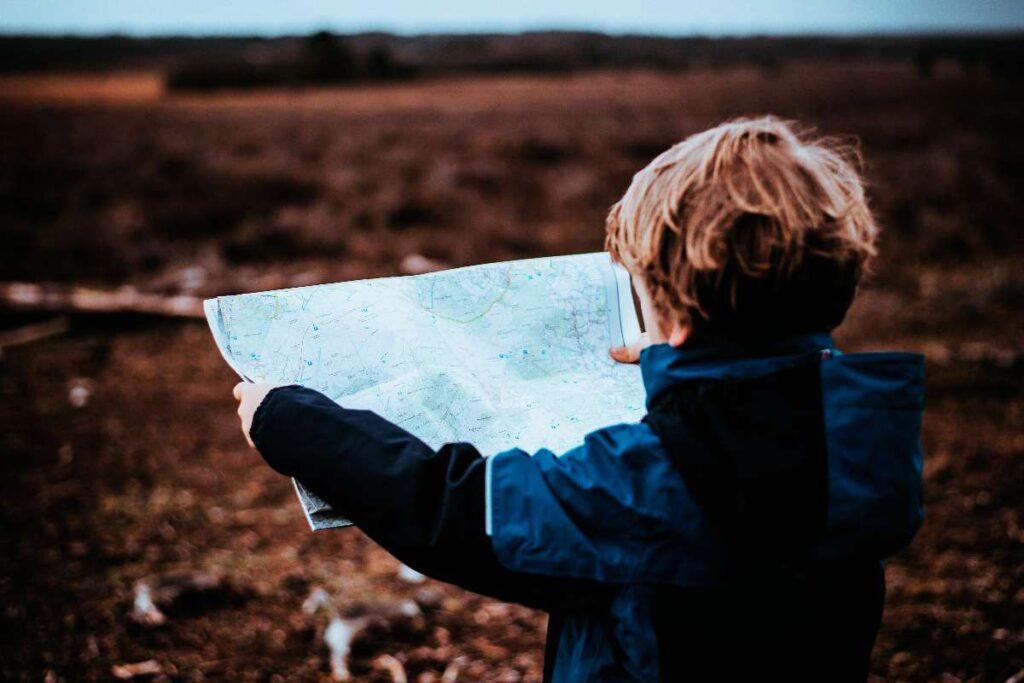
Best travel tips when Planning your Trip:
93. Involve kids in age-appropriate tasks during the trip
Assign your children simple responsibilities, such as carrying their backpacks with snacks and toys, or helping with packing some of their clothes or travel essentials. These tasks not only lighten your load but also make your kids feel responsible and engaged in the travel process.
94. Schedule downtime during your trip to relax and recharge, especially after long travel days.
Plan for periods of relaxation and rest during your trip, especially after long travel days or busy sightseeing. Use this time to relax at your accommodation, visit a nearby park, or simply have some quiet moments together.
95. Avoid rushing from one activity to another to give them time to absorb and enjoy each experience.
Plan your itinerary at a comfortable pace, allowing ample time for each activity and sightseeing experience. This gives your kids the opportunity to immerse themselves in each moment, absorb new information, and thoroughly enjoy the experience.
96. Let the kids have a say in choosing activities, restaurants, or places to visit during the trip.
Discuss the travel itinerary with your kids and ask for their input on activities, restaurants, or places they’d like to visit. This empowers them to feel invested in the trip and excited about the choices they helped make.
97. Plan for buffer time in your schedule to accommodate delays
Include buffer time in your schedule to account for delays, whether it’s due to traffic, unexpected stops, or simply taking a little longer to get ready in the morning.
98. If possible, plan for morning activities when kids are generally well-rested.
Plan more adventurous and energy-consuming activities in the morning when your children are at their freshest and most alert.
Save quieter or more relaxed activities for the afternoon or evening when your kids may start to tire out.
99. Let the Kids Play
Kids need time to play, explore, and simply be kids. Incorporating playtime in a nearby park or garden lets them burn off energy, enjoy outdoor activities, and have fun without constraints.
100. Preschedule transportation from the airport
Before your trip, arrange for transportation from the airport to your accommodation that provides proper car seats or restraints for your child’s age and size.
Booking a car service in advance ensures that you have safe and reliable transportation waiting for you upon arrival.
101. Embrace Spontaneity
Keep an open mind and be willing to deviate from your original plans if your kids show a keen interest in a particular activity or attraction.
Spontaneous moments can lead to some of the most cherished memories of your family travel experiences.
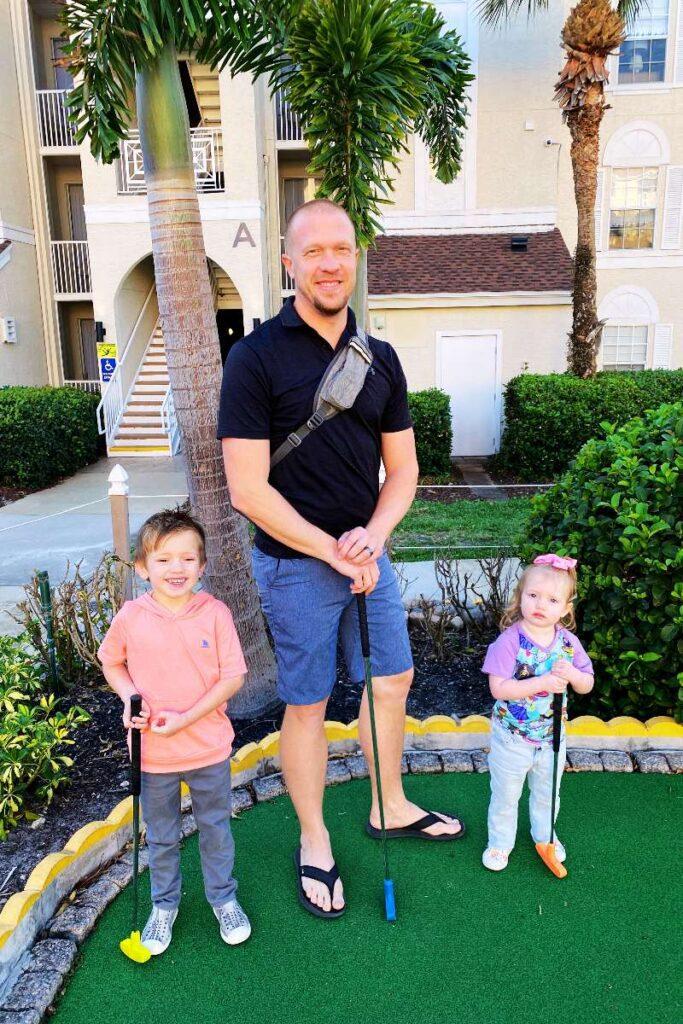
Flexibility is Key
102. Be Patient:
Patience is key when facing travel hiccups, such as flight delays, long lines, or changes in itinerary. Keep in mind that your children may also experience moments of restlessness or impatience during travel, and responding calmly can set a positive example for them.
103. Follow Their Pace
Respect your children’s pace during sightseeing and activities. If they show interest in a particular exhibit or location, allow them the time to explore and soak in the experience fully.
104. Be Open to Changes:
Weather conditions, closures of attractions, or unexpected events can impact your travel plans. Embrace a flexible mindset that allows you to adapt your schedule when necessary.
Having backup plans or alternative activities in mind can also be helpful in case of unforeseen circumstances.
105. Expect Delays
When traveling with children, delays are a natural part of the journey.
Factor in extra time for transit, meals, and sightseeing to account for any potential delays. This approach will help you manage your family’s expectations and prevent feeling rushed or stressed during travel.
106. Stay Calm During Transitions
Moving from one place to another during travel can be overwhelming for children, especially when it involves changes in the environment or routine.
Provide clear explanations and gentle guidance during transitions to help your children feel secure and at ease.
107. Expect and Accept Meltdown
Travel can be draining for children (for adults too).
Accept that meltdowns are a natural part of family travel, especially when kids are tired, hungry, or overstimulated.
Instead of getting frustrated, offer comfort and understanding to help your child regulate their emotions.

Capture Memories with your kids:
108. Let your kids let them capture their perspective of the trip.
Putting a camera in your older kids’ hands can be a wonderful way to encourage them to express their unique viewpoints of the journey.
Empower your older children to take pictures of sights, people, and experiences that resonate with them.
109. Collect mementos from your trip to create a travel journal together.
Encourage your children to collect various mementos during the trip, such as ticket stubs, postcards, brochures, and drawings. As a family, spend time together at the end of each day or the end of the trip, reflecting on the experiences and adding these items to the journal.
110. Encourage kids to share their travel experiences with friends and family through postcards or emails.
Encourage your children to send postcards to their friends or family members back home. They can write about their favorite experiences, funny anecdotes, or exciting discoveries.
For older kids, consider having them send emails or digital updates with pictures to loved ones, sharing their travel adventures in real time.
111. Create a “Memory Jar”
Bring along a small jar or container and some strips of colorful paper. Throughout the journey, encourage your children to write down memorable moments, funniest incidents, or their favorite experiences on the paper strips.
At the end of the trip, gather together as a family and read these memories out loud, reminiscing about the highlights of the journey.
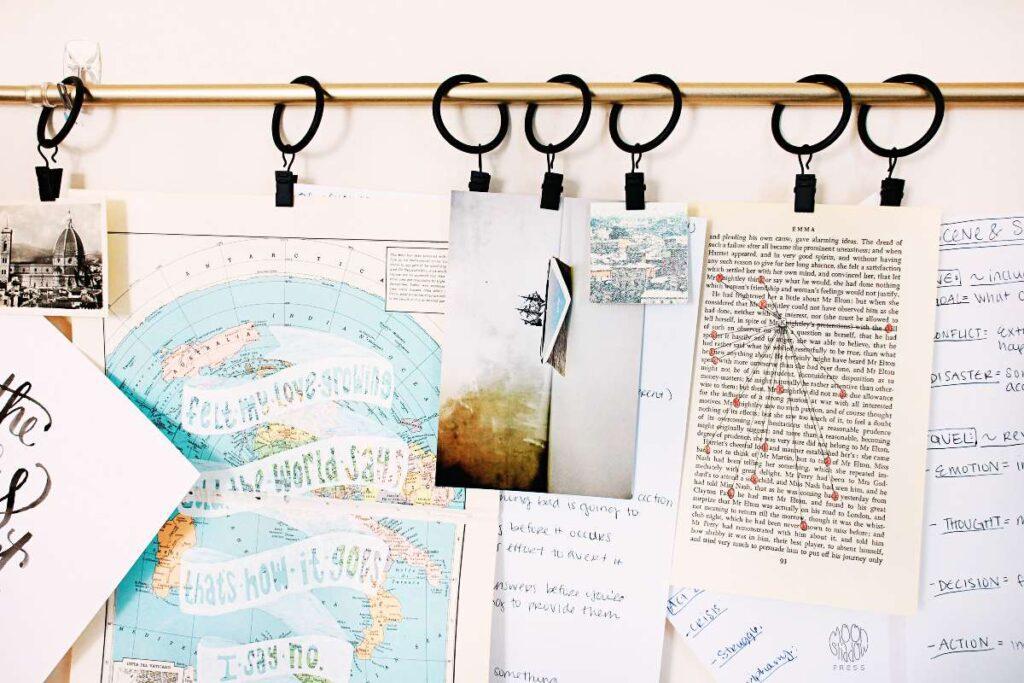
Don’t be scared to Plan your vacation NOW
112. Ignore the naysayers and those that think you are crazy for traveling with kids.
When you decide to travel with your kids, you may encounter well-meaning but skeptical individuals who question the feasibility of the journey.
Trust your instincts and confidence in your family’s ability to travel together. Don’t let the opinions of others discourage you from exploring the world with your kids. I promise you that your family can travel and travel well.
113. Don’t postpone travel until your kids are “old enough.” Go now if you can afford it. The experience and memories are priceless.
Some parents may consider waiting until their kids are older to travel, believing that young children won’t appreciate or remember the experience
Traveling with young kids offers a unique and magical perspective on the world. Children are naturally curious and adaptable, making them ideal explorers who soak in their surroundings with wonder.
Even if they don’t remember every detail, you as their parent will remember their joy, their looks of happiness, their giggles during experiences.
So……..take the family trip. I promise you can do it!





